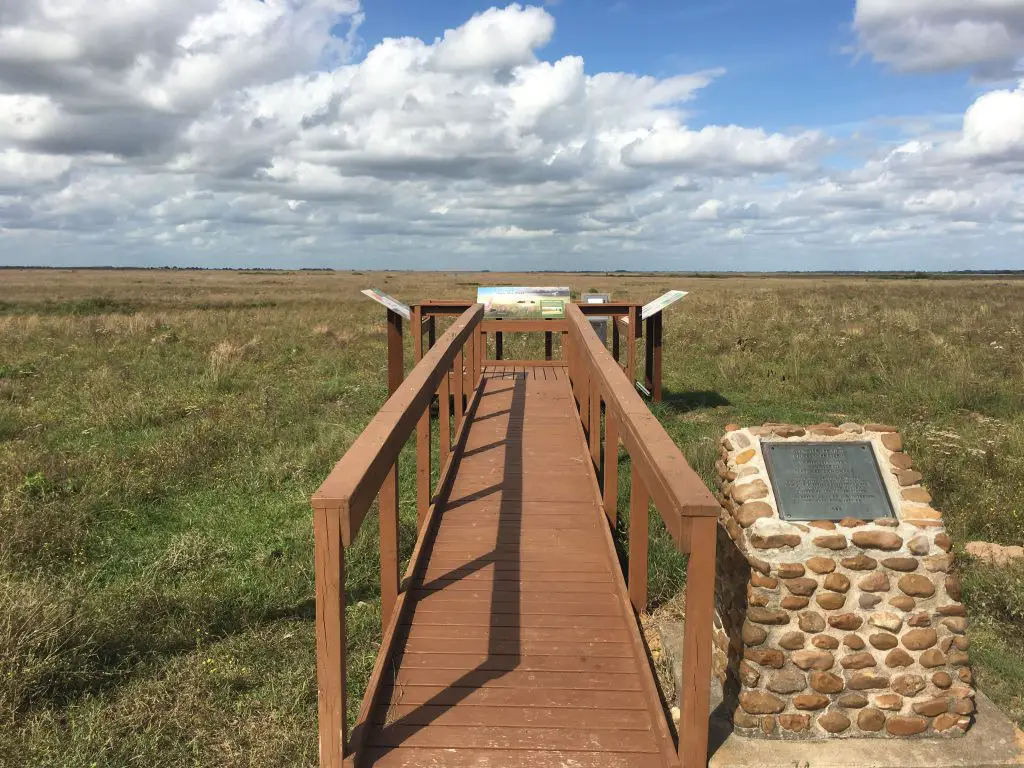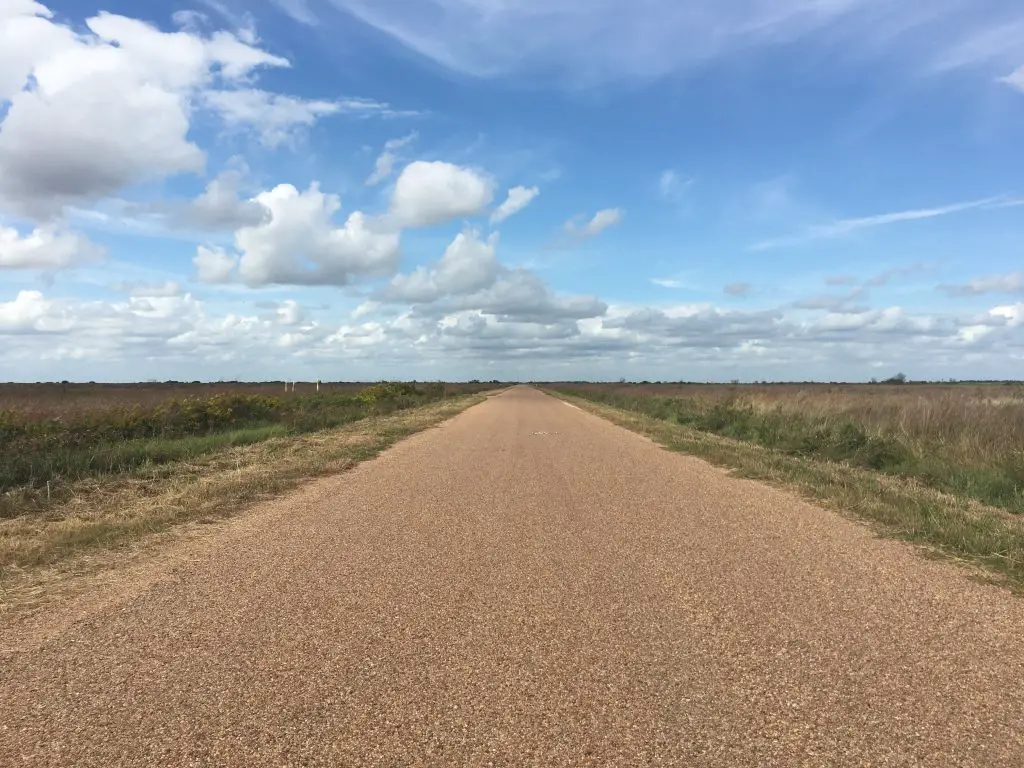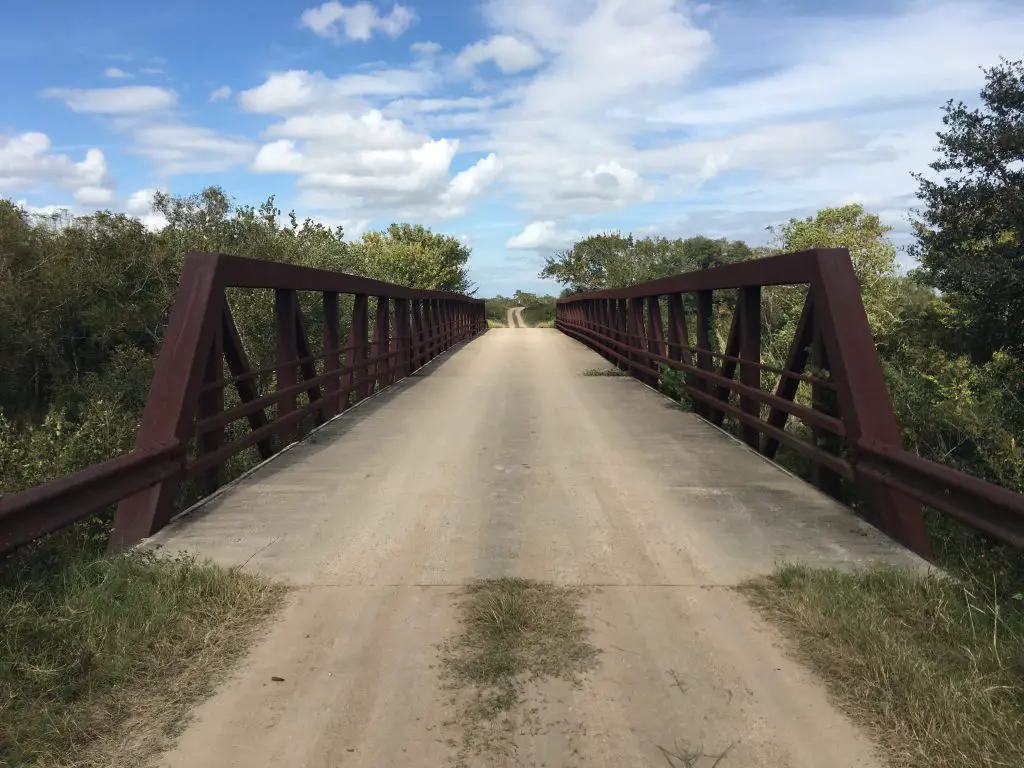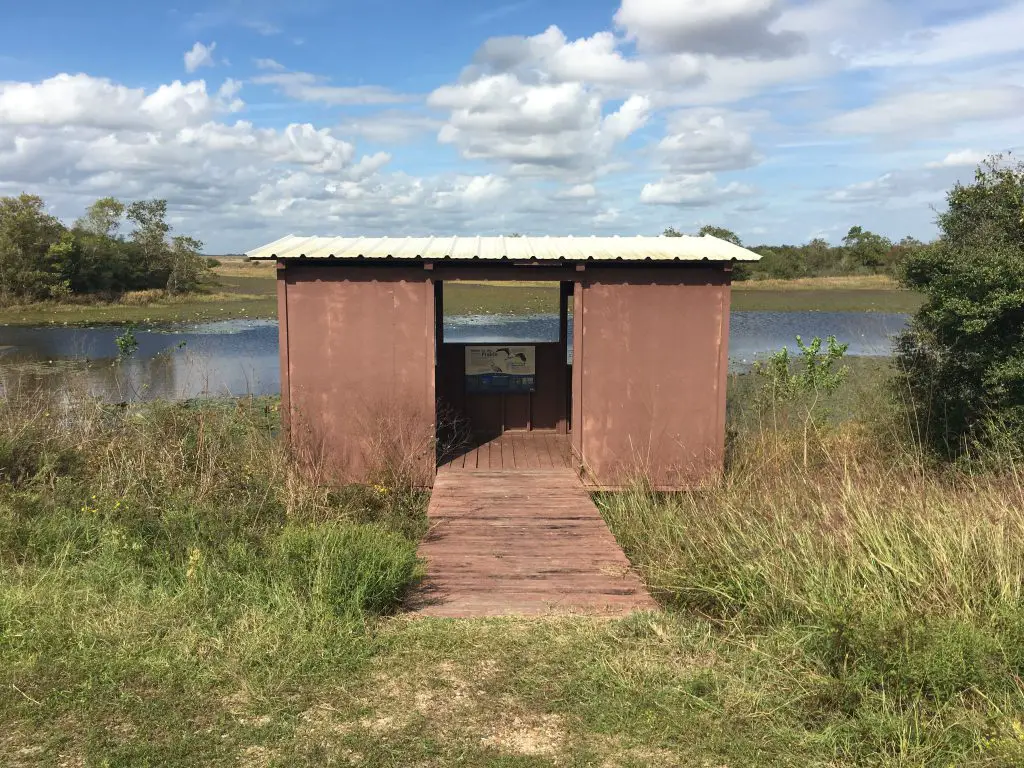Highlights
- Only place in Texas to see a wild Greater Prairie Chicken
- Abundant grassland species
- Beautiful spring wildlife flower blooms
Trail Length:
4 mi. Auto Tour Loop
2 mi. Sycamore Trail
1.5 mi. Pipit Trail

The Location
Attwater is a refuge that protects one of the largest patches of coastal prairie remaining in Texas.
It is also the only place in the state to see a Greater Prairie Chicken, whose populations have disappeared along with their habitat.
Intense conservation efforts are put forth each year to keep this Texas population of Greater Prairie Chicken alive, including releasing captive bread adults, protecting nests and chicks within wire pens to keep out predators, active monitoring by radio telemetry, and widespread Fire Ant treatment.
For birders and visitors, this refuge offers abundant habitat to view grassland birds such as Northern Bobwhite, Cassin’s Sparrow, LeConte’s Sparrow, and Sprague’s Pipit. These birds can be viewed by driving the auto tour loop and by walking the Pipit Trail (1.5 mi.) and the Sycamore Trail (2 mi.).
The quaint headquarters building includes several informational displays about the Prairie Chickens, as well as restrooms and a drinking fountain.

Birding Recommendations
To See Greater Prairie Chickens
The Prairie Chickens spend most of their time in the back half of the refuge which is not accessible to the public. The staff offers a guided van tour to this area on the first Saturday of each month, although reservations are required. Contact the headquarters during business hours to reserve your spot.
These birds are occasionally seen along the auto tour loop, but chances are low you’ll get your lifer Greater Prairie Chicken this way.

Birding the Refuge
Here’s a great strategy for seeing as many different birds as possible:
- Drive the Auto Loop. Go slow, listen out your windows, and constantly scan for movement. Remember to scan the sky and horizon for hawks and flyovers.
- Check Refuge Lake. There’s a small parking area along the Auto Loop, which comes up quickly after leaving the headquarters building. Cross the bridge on foot over Coushatta Creek, and walk up the small hill to the bird blind. This will give you a good view of the water.
- Walk one of the foot trails (Sycamore or Pipit). The Sycamore trail will lead you from the headquarters building to the hardwoods growing along the creek. This will get you a few woodland species, which will diversify your list. The Pipit Trail can very good during the winter, getting you some extra sparrows and possibly a Sprague’s Pipit.


Morning birding is highly recommended at this location. The birds here really seem to tuck down and hide silently in the grass after mid-morning passes, so make an effort to rise with the sun and you’ll be rewarded with a prairie bustling with life.
Winter birding is fantastic for sparrows. Brush up on your sparrow ID skills before you head out and take your time picking through them. On a good morning expect 10+ sparrow species, including a dozen or so LeConte’s Sparrow. Other possibilities include hundreds or even thousands of geese, plus Sandhill Crane, Short-eared Owl, American Woodcock, Grasshopper Sparrow, and high numbers of Sedge Wren.
Northern Bobwhite typically don’t begin calling until about the first or second week of May, but once they start they don’t stop! Expect to hear them throughout the day until mid June. Springtime will also bring Dickcissel by the hundreds, plenty of Scissor-tailed Flycatcher, and with some luck, a singing Cassin’s Sparrow.
